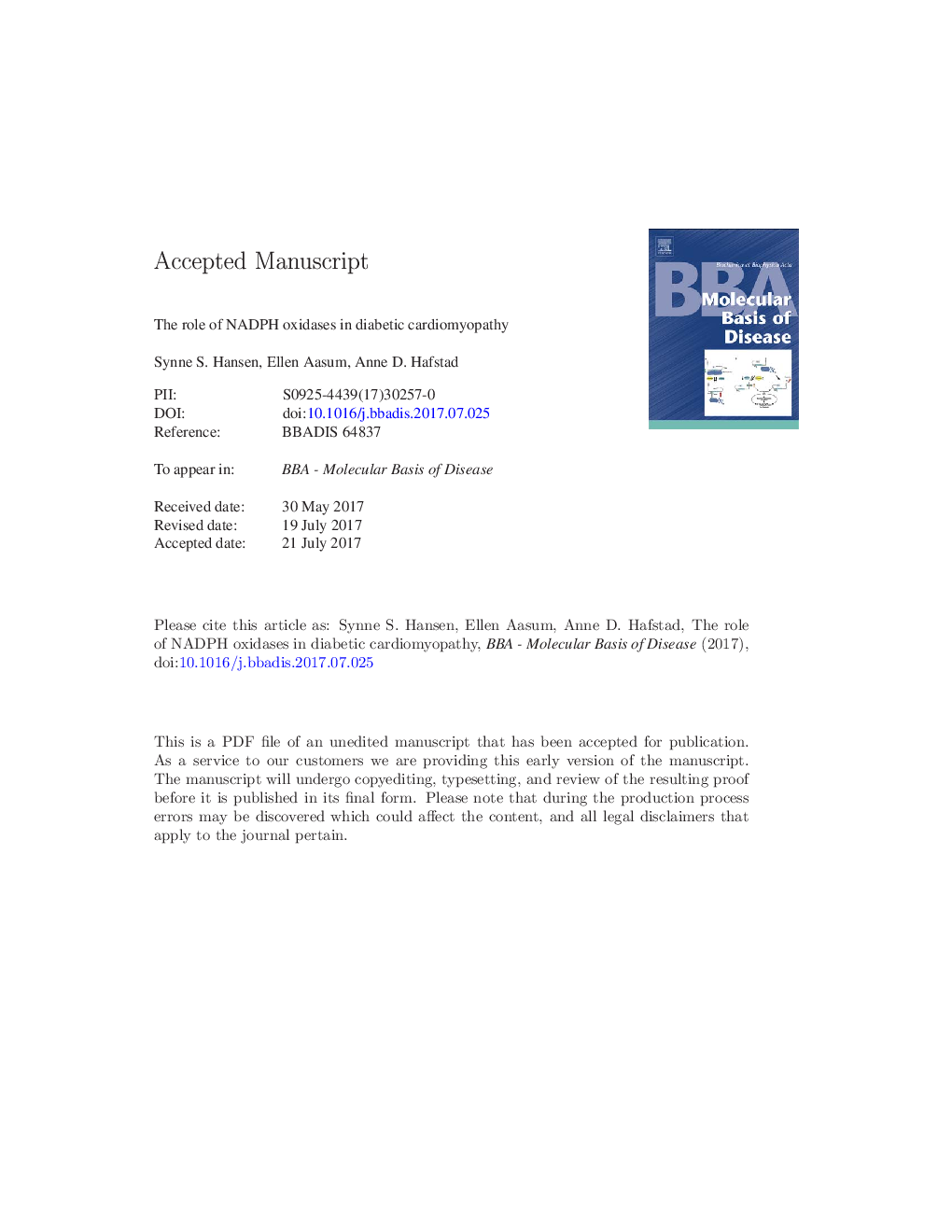| Article ID | Journal | Published Year | Pages | File Type |
|---|---|---|---|---|
| 8258445 | Biochimica et Biophysica Acta (BBA) - Molecular Basis of Disease | 2018 | 17 Pages |
Abstract
Systemic changes during diabetes such as high glucose, dyslipidemia, hormonal changes and low grade inflammation, are believed to induce structural and functional changes in the cardiomyocyte associated with the development of diabetic cardiomyopathy. One of the hallmarks of the diabetic heart is increased oxidative stress. NADPH-oxidases (NOXs) are important ROS-producing enzymes in the cardiomyocyte mediating both adaptive and maladaptive changes in the heart. NOXs have been suggested as a therapeutic target for several diabetic complications, but their role in diabetic cardiomyopathy is far from elucidated. In this review we aim to provide an overview of the current knowledge regarding the understanding of how NOXs influences cardiac adaptive and maladaptive processes in a “diabetic milieu”. This article is part of a Special issue entitled Cardiac adaptations to obesity, diabetes and insulin resistance, edited by Professors Jan F.C. Glatz, Jason R.B. Dyck and Christine Des Rosiers.
Keywords
CaMKIINCXGLUTSGLTRAGEPKCDATSMAOdiallyl trisulfideAGEsRASXanthine oxidaseCa2 +/calmodulin-dependent protein kinase IINADPH oxidasesNADPH-oxidaseNOxROSAngiotensin IIFatty acidOxidative stressGlucose transporterAng IISarcoplasmic reticulumRenin-angiotensin-systemRONSendoplasmic reticulumMetabolismadvanced glycation end-productsmonoamine oxidaseheart failureProtein kinase Cdiabetic cardiomyopathyhigh glucoseReactive oxygen species
Related Topics
Life Sciences
Biochemistry, Genetics and Molecular Biology
Ageing
Authors
Synne S. Hansen, Ellen Aasum, Anne D. Hafstad,
